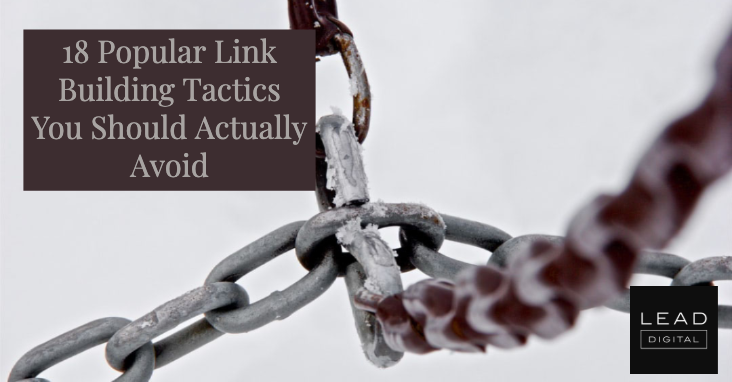 Google has been whittling away the value of links since the beginning of the search engine.
Google has been whittling away the value of links since the beginning of the search engine.
The reason Google chooses to ignore certain kinds of links is that those links do not represent a true recommendation.
As far back as 2005, I was told by a Googler at a conference Q&A that Google depreciated links from pages that are irrelevant, like from a footer “powered by” link.
That’s an example of Google removing irrelevant links from what they count as a link signal for ranking purposes.
A true link signal is when a publisher links to a webpage because it is relevant to the topic and therefore useful. What all of the following tactics have in common is that they do not result in a true link signal.
1. Historical Data Link Trap
This is from a patent about historical data that covers inbound links, outbound links, how fast links are acquired, how often content is updated and so on.
One of the factors that are relevant to link building has to do with adding links to a page without the page actually being updated.
Google is on record stating that just because something is in a patent or a research paper doesn’t mean it’s in use.
Additionally, the older the patent the higher the possibility that another algorithm was developed that made it obsolete.
That said, we don’t know whether something like this is in use. It’s something to take note of.
This patent is called, Information Retrieval Based on Historical Data.
Google has snapshots of the web, including snapshots of the state of the linking patterns.
The most common and easily detectable mistake is adding a link to an existing webpage.
This patent dates from 2003. Matt Cutts, then head of Google’s spam fighting department, is listed in the patent as one of the authors. That’s a good sign that this patent has a strong anti-spam component.
The Algorithm That Tracks Link Additions & Removals
Among the various things this patent covered, one of them was tracking changes of links on a webpage:
- How many links are added.
- How often links are added.
- How often links are removed.
This patent covers a wide variety of changes to links on a page and links to a webpage.
Here’s a sample of the things this patent covers.
The section below discusses identifying how new links that are associated with a document are and assigning scores (weights) relative to the newness of those links and then using those scores to rank a webpage.
26. …assigning weights to the links based on the determined measure of freshness, and scoring the document based, at least in part, on the weights assigned to the links associated with the document.
27. The method of claim 26, wherein the measure of freshness of a link associated with the document is based on at least one of a date of appearance of the link, a date of a change to the link, a date of appearance of anchor text associated with the link, a date of a change to anchor text associated with the link, a date of appearance of a linking document containing the link, or a date of a change to a linking document containing the link.
Now, this section of the same patent discusses issuing penalties.
First, it discusses determining time based link information (claim 54) and in claims 55 and 56, it discusses penalizing rankings based on time related link patterns.
54. A method comprising:
…determining longevity of the linkage data;
deriving an indication of content update for at least one …or more linking documents providing the linkage data; and
adjusting the ranking of the linked document based on the longevity of the linkage data and the indication of content update for the linking document.
The next section (claims 55 & 56) are sub-sections to claim 54 above. The following part describes how Google can alter ranking scores with time based link information:
55. The method of claim 54, wherein the adjusting the ranking includes penalizing the ranking if the longevity indicates a short life for the linkage data and boosting the ranking if the longevity indicates a long life for the linkage data.
56. The method of claim 55, wherein …adjusting the ranking further includes penalizing the ranking if at least a portion of content from the linking document is considered stale over a period of time and boosting the ranking if the portion of content from the linking document is considered updated over the period of time.
What that section appears to cover is obtaining links from content that hasn’t been otherwise updated.
Link selling was a multi-million dollar business in those years. Prior to Penguin, around 2007-2009, Google was able to identify which links were paid and began devaluing them.
I know this because an executive from a link selling business told me that many of the links they sold were increasingly no longer working.
There were multiple theories of how Google was catching links added to pages that weren’t otherwise updated. In retrospect, something like the Historical Data Patent could be used to easily spot paid links in addition to other paid link signals. – Read more



